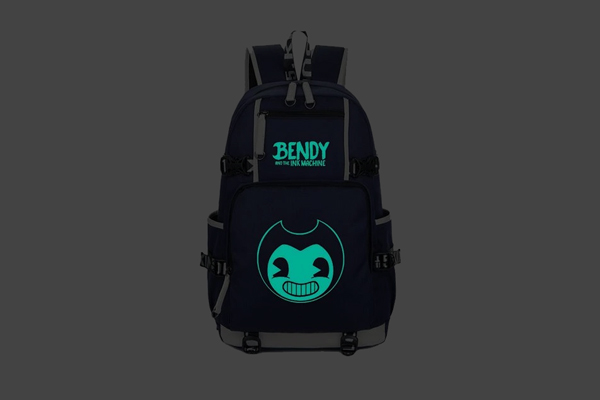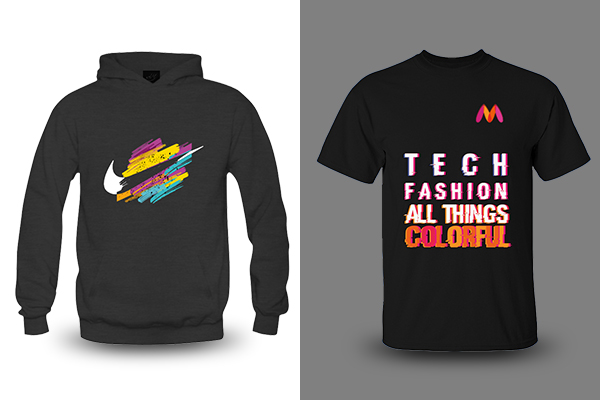
Offset printing is a commonly used printing technique in which the inked image is transferred (or "offset") from a plate to a rubber blanket, then to the printing surface. When used in combination with the lithographic process, which is based on the repulsion of oil and water, the offset technique employs a flat (planographic) image carrier. Ink rollers transfer ink to the image areas of the image carrier, while a water roller applies a water-based film to the non-image areas.
Computer-to-plate (CTP) is a newer technology which replaced computer-to-film (CTF) technology, and that allows the imaging of metal or polyester plates without the use of film. By eliminating the stripping, compositing, and traditional plate making processes, CTP altered the printing industry, which led to reduced prepress times, lower costs of labor, and improved print quality.
Later the stickers are heat trasfered over the following garments:-
Screen printing is a printing technique where a mesh is used to transfer ink onto a substrate, except in areas made impermeable to the ink by a blocking stencil. A blade or squeegee is moved across the screen to fill the open mesh apertures with ink, and a reverse stroke then causes the screen to touch the substrate momentarily along a line of contact. This causes the ink to wet the substrate and be pulled out of the mesh apertures as the screen springs back after the blade has passed. One color is printed at a time, so several screens can be used to produce a multicoloured image or design.
Plastisol is the most common ink used in commercial garment decoration. Good colour opacity onto dark garments and clear graphic detail with, as the name suggests, a more plasticized texture. This print can be made softer with special additives or heavier by adding extra layers of ink. Plastisol inks require heat (approx. 150 °C (300 °F) for many inks) to cure the print.
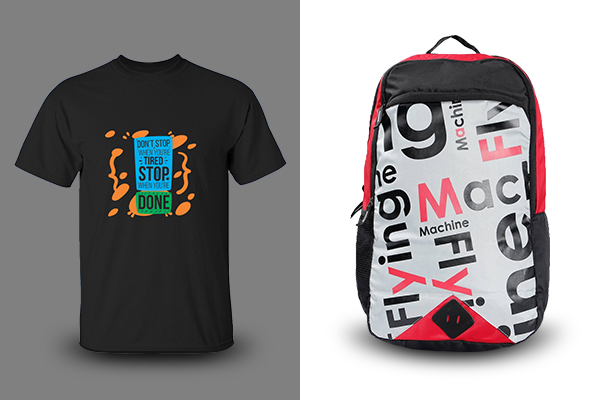
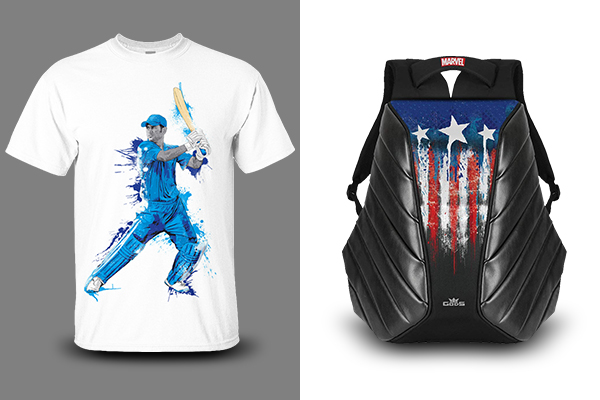
Dye-sublimation printing (or dye-sub printing) is a computer printing technique which uses heat to transfer dye onto materials such as a plastic, card, paper, or fabric. The sublimation name was first applied because the dye was considered to make the transition between the solid and gas states without going through a liquid stage. This understanding of the process was later shown to be incorrect, as there is some liquefying of the dye.
The dye-sublimation printing process is used to print on polyester or other synthetic fabrics. As dye-sublimation thermal printers utilize heat to transfer the dye onto the print media, the printing speed is limited by the speed at which the elements on the thermal head can change temperature.
The Sublimation printed sheets are fused on polyester or other synthetic fabrics, such as:-
Reflective vinyl is not self luminescent. Its properties aren’t apparent in normal daylight conditions. It’s specifically designed to be visible at night when stricken with artificial light such as that from motor vehicle headlights. This reflective property is what makes road signs legible after dark without the cost of electric illumination.
A vinyl cutter plotter, often referred to only as a plotter, is a piece of computer gear often used for signmaking. A vinyl letter machine may be big or small and can be used to cut out vinyl sign lettering and other images, to make a range of things from billboards to bumper stickers. The vinyl used is like a sticker material, with a vinyl facing and adhesive backing attached to a paper lining.
Vinyl comes with an adhesive on one side with a paper backing that protects the adhesive until exposed. When fused at 160 °C (320 °F) the adhesive gets sticks over the following garments:-
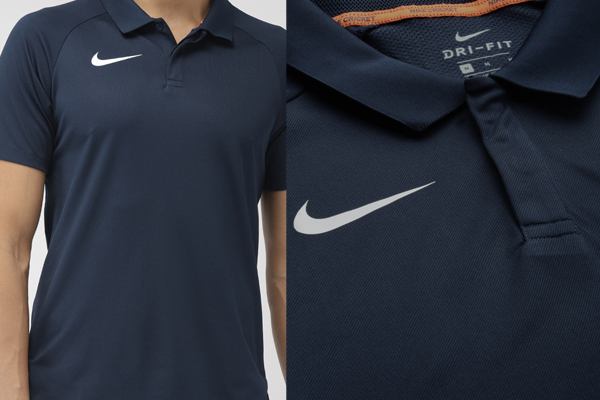
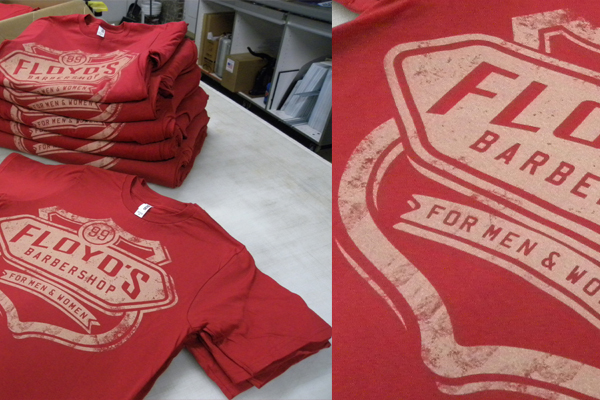
waterbased inks because they are soft and breathable. Using the discharge print method and waterbased printing we are able to print your designs on apparel with inks that bleach out the existing dye and replace it with your chosen colors. Water based discharge printing results in crisp detailed reproductions of your art without the heavy hand of traditional plastisol printing.
These inks typically work best on 100% cotton fabric, although a surprising number of 50/50 fabric blends are now showing bright print results as well. There are some fabric dyes that resist the discharge process (kelly green, royal blue, purple) and other cotton garments that print up stunningly well. We want to work closely with you to pick the best combination of garments and inks to get the results you want.With standard water based fabric screen printing ink the average is about 20 minutes to touch dry, but as with all screen printing inks we must heat (curing) set the print to make it permanent.
Things that glow in the dark contain a substance called phosphor, which is capable of radiating light after it has become energized. Such substances first soak up energy for long periods when exposed to light and subsequently radiate visible light in the dark.
The products will demonstrate their glow-in-the-dark characteristics after about 5-10 minutes of light exposure. Radium Vinyl Sticker comes with an adhesive on one side with a paper backing that protects the adhesive until exposed.
A plotter cutting machine, often referred to only as a plotter, is a piece of computer gear often used used to cut out vinyl sign lettering and other images. When fused at 160 °C (320 °F) the adhesive gets sticks over the following garments:-
